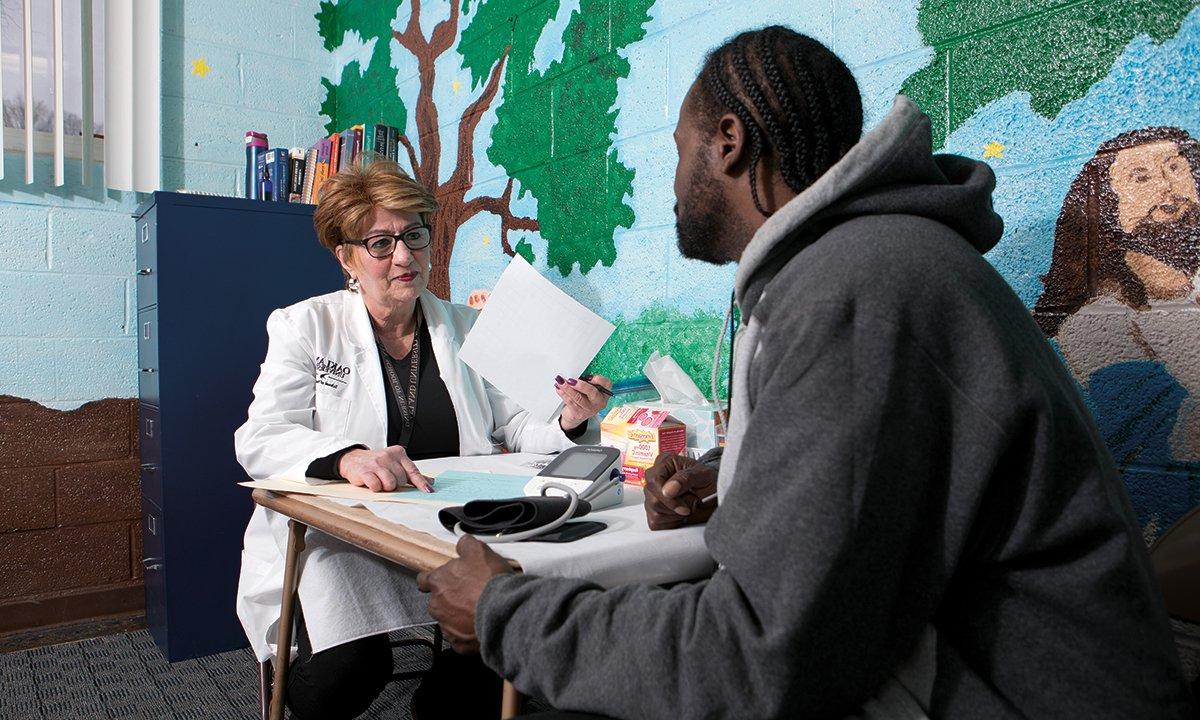Working on the Frontlines Comes at a Cost
Overcoming PTSD During the COVID-19 Era

Joanna 埃尔南德斯 and Kristen Munyan were feeling the effects of the pandemic in the hospital setting and knew they would not be alone. They conducted a study of nurses working during the pandemic to determine the possible prevalence of post-traumatic stress symptoms.

Joanna 埃尔南德斯 and Kristen Munyan were feeling the effects of the pandemic in the hospital setting and knew they would not be alone. They conducted a study of nurses working during the pandemic to determine the possible prevalence of post-traumatic stress symptoms.
As nurses continue to provide care for patients during the pandemic, they must also focus on their own health needs, as proven by faculty research.
As a nurse practitioner in an emergency department in Detroit, assistant professor Joanna 埃尔南德斯, DNP, RN, AGACNP-BC, started noticing the rising number of COVID-19 patients who were acutely ill this spring. 不幸的是, the virus was not well understood at the time, as very little literature was available about proper treatment and management, leading to high stress for 埃尔南德斯 and her colleagues.
“There was one day I saw a patient having CPR with a limited number of healthcare providers allowed in the room, while another patient needed to be on a ventilator, 但他拒绝使用, as she wanted to save it for someone else,埃尔南德斯说.
更不用说, although she had access to proper protective equipment (PPE) during every shift, many nurses had to reuse theirs. The stress of 埃尔南德斯’s surroundings were so overwhelming at times that she often went home exhausted and in tears. 毕竟, she was not only tired of wearing PPE all day, but she was also overwhelmingly concerned about transmitting COVID-19 to her husband and children.
While reflecting on the impact COVID-19 was having on her emotions overall, she began to wonder what bedside nurses were feeling on a daily basis. Deciding to evaluate the risk of post-traumatic stress disorder (PTSD) in the nursing population, she—along with assistant professor Kristen Munyan, DNP, RN, FNP-BC, and associate professor Gary Moore, 博士学位, RN—also sought to explore whether or not bedside nurses have appropriate PPE for each of their shifts.
“We were also curious to see if there was a relationship between COVID-19 and nursing retention,Munyan说。. “So we conducted our research online, 利用调查, and we used social media to obtain participants—specifically, a link to the survey was placed in nursing COVID-19 groups on 脸谱网 for a two-week period.”
在进行调查之后, 埃尔南德斯, Munyan and Moore discovered that a majority of participants had a positive score for PTSD. Many nurses also discussed how difficult it was to obtain and use PPE. 事实上, one participant even mentioned that their hospital’s policy prohibited nurses from wearing PPE, unless their patients have tested positive for COVID-19.
底线? COVID-19疫情远未结束. 事实上, nurses are still very much in the midst of the pandemic, and there are no signs it won’t be staying around for a while longer. 和, 结果是, nurses have been at their patients’ bedsides, providing care in ways they never had before, an all too common daily reality, which may continue for years to come.
“我们的研究证明了这一点, the pandemic has not only changed patients’ lives, along with their loved ones’ lives—it’s also changed nurses’ lives forever,埃尔南德斯强调说. “Nurses, after all, have been at the front of the line, leading the pack, since the pandemic began.”
她继续说道, “和 although nurses have proven over and over that they’re resilient, 他们也是人. We, 作为护士, must remember to take care of ourselves, whether we’re encountering issues with PTSD or PPE, so that we can continue to care for others.”
For more information about this study, contact Joanna 埃尔南德斯 at (电子邮件保护).

 2020年12月3日
2020年12月3日 作者:克里斯·刘易斯
作者:克里斯·刘易斯


